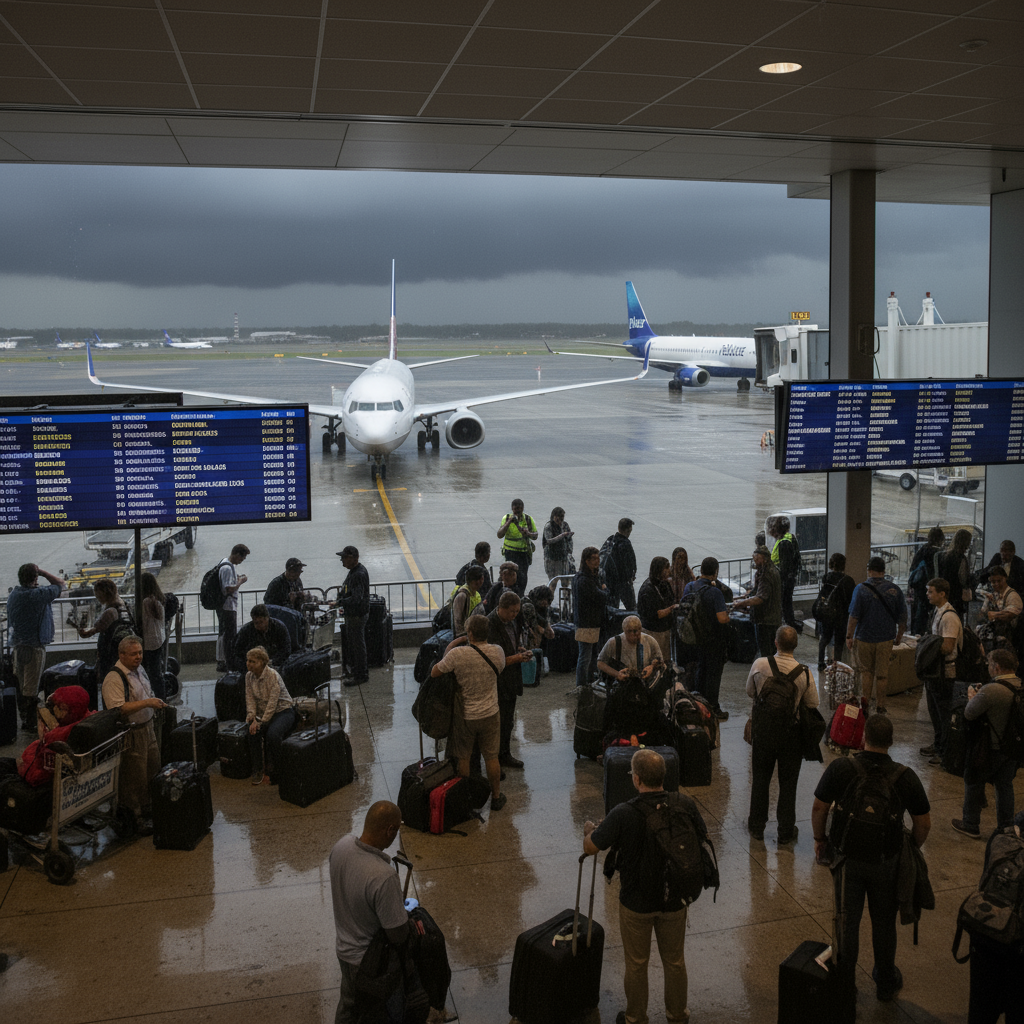Physical Address
304 North Cardinal St.
Dorchester Center, MA 02124
Physical Address
304 North Cardinal St.
Dorchester Center, MA 02124
Global aviation news tracker
Global aviation news tracker

Widespread disruptions hit U.S. air travel on October 28–29, 2025, with major hubs affected and thousands of passengers delayed.
US flight delays on October 28–29, 2025 left at least 132 flights canceled and 3,188 delayed nationwide, according to aggregated airline data. Major carriers were impacted, including Spirit (NK), Delta (DL), JetBlue (B6), American (AA), Endeavor (9E) and United (UA), creating knock‑on effects across schedules and connections.
Airports in Chicago, Cincinnati, Austin, Orlando, Boston and Santa Ana reported heavy disruption as airlines scrambled to rebook passengers and reposition aircraft. The combination of adverse weather and operational challenges — from crew timing to aircraft rotations — amplified the problem, forcing long ground waits and missed connections for many travelers.
When delays cluster across several large operators, recovery becomes harder. On October 28–29, airlines had to manage crew duty limits, slot constraints and aircraft availability while weather systems reduced runway throughput at key hubs. That cascade effect is a common failure mode in busy networks: one late arrival can ripple through dozens of subsequent flights.
For passengers, the experience ranged from extended gate holds to overnight rebookings. Airlines typically prioritized rebooking on the next available flight and arranging accommodations where contractually required, but capacity limits meant some travelers faced long waits or alternative routings.
If you were traveling during the disruption: check your airline app for rebooking and refund options, monitor your flight status, and allow extra time for baggage and connections. Frequent flyers should also review clocking rules for minimum connection times and keep receipts for delay‑related expenses if you intend to submit claims.
While single events like these are not unusual in high‑traffic periods, they highlight persistent vulnerabilities in U.S. air traffic management and airline scheduling resilience — issues policymakers and carriers continue to address.